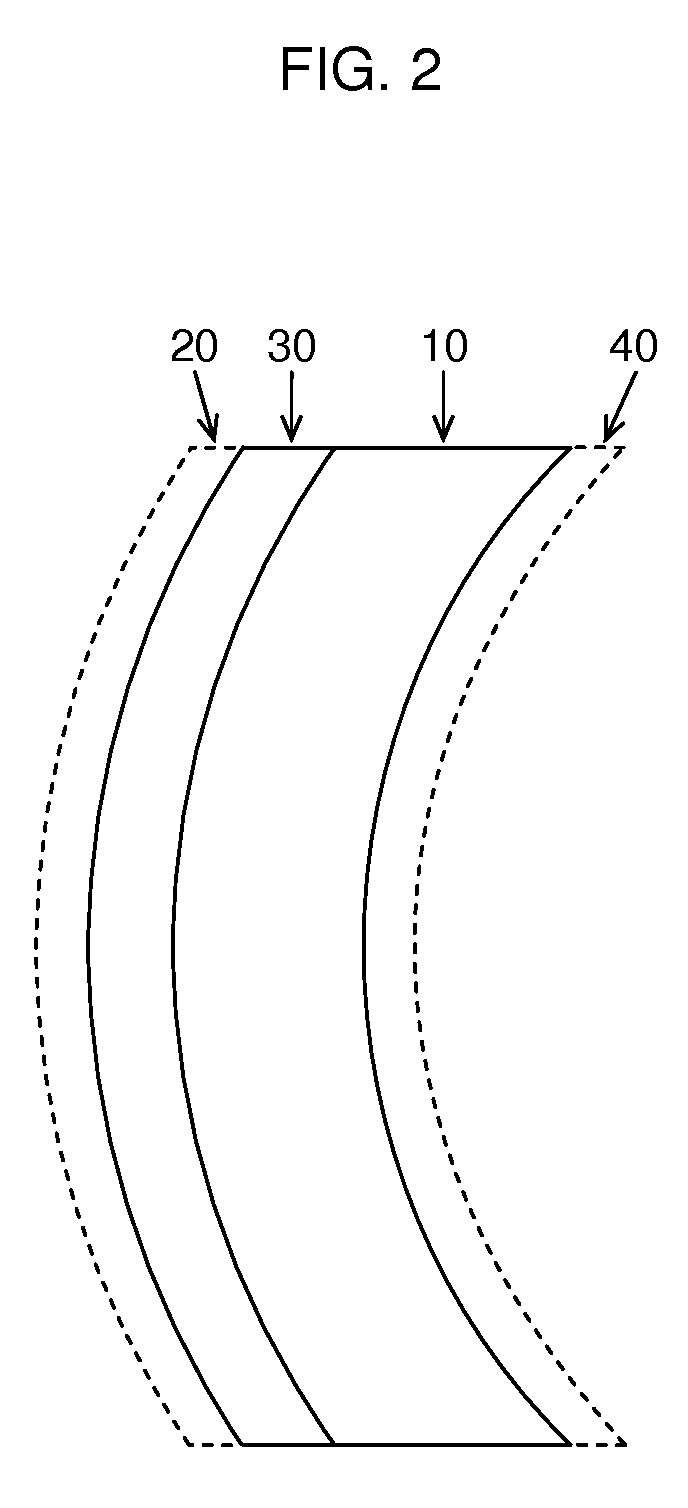Eyewear lenses with controlled filters for night driving
a technology of night driving and filters, applied in the field of eyewear, can solve the problems of reduced visibility, reduced eye recovery time, and light scattering, and achieve the effect of reducing the damage of automotive headlamps and maintaining the overall luminous transmittance of the lens at an acceptable level
- Summary
- Abstract
- Description
- Claims
- Application Information
AI Technical Summary
Benefits of technology
Problems solved by technology
Method used
Image
Examples
example 1
[0073]The inventor tested the five samples of Table 1 in real-world conditions by holding or mounting them in front of his eyes and viewing headlamps at dusk and after dark under the following conditions:[0074]A: viewing headlamps by standing in front of various cars parked in a driveway, and[0075]B: while seated in a car in either the driver (stationary) or passenger (stationary and in motion) position, and looking through the windscreen at oncoming headlamps.
[0076]The inventor found that under condition A, filters 1, 3, 4 and 11 all performed about the same, with some noticeable reduction in the headlamp intensities. Filter 14 gave a noticeable yellow-green tint to the white light of the headlamps, and seemed to diminish the headlamp intensities too much. Filter 14 was judged by the inventor to exhibit inferior filtering performance vs. the other samples compared under condition A.
[0077]Under the more commonly experienced condition B, the inventor noted that filters 3 and 4 clearl...
example 3
[0084]FIG. 4 shows the unfiltered LED headlamp emission (heavy dotted line), and the headlamp spectra as transmitted through each of the sample filters in listed Table 1. It is clear that filters 3 and 4 (light grey dotted and dashed traces) attenuate more of the LED emission near 450 nm than the other samples. This can be helpful to reduce blue-light scatter and glare, as the inventor noted in EXAMPLE 1. Note that filters 1, 11 and 14 attenuate less of the peak emission near 450 nm, but attenuate the region of 460-490 nm, where a dip occurs in the lamp emission, to a greater extent than do filters 3 and 4. For LED headlamps, as noted by the inventor's observations in EXAMPLE 1, filters 3 and 4 were more preferred to reduce glare and haloes than the other filters. This could indicate that more filtering in the emission region of 460-490 nm may not contribute to reducing glare and halo effects as effectively as the controlled, limited blocking in the lower wavelength region. All of t...
example 4
[0085]FIGS. 5-6 shows the unfiltered emission of a HID headlamp A (heavy dotted line), and this headlamp's spectra as transmitted through each of the sample filters in listed Table 1. For easier analysis of the spectra and filtering effects, FIG. 5 shows spectral plots over the shorter visible wavelength region from 395 nm to 515 nm, and FIG. 6 shows spectral plots over the longer visible wavelength region from 515 nm to 640 nm.
[0086]In FIG. 5, one can see that filters 3 and 4 reduce more of this HID headlamp's emission band near 436 nm than the other filters evaluated. This correlates with a greater reduction of blue light which is more prevalently scattered than light emitted at longer wavelengths. This may play an important role in the perception noted in EXAMPLE 1 that viewing through filters 3 and 4 gave crisp, clear views of headlamps, with less halo effects. FIG. 5 shows that the headlamp's emission peak near 475 nm is much less attenuated by filters 3 and 4, but is more atte...
PUM
 Login to View More
Login to View More Abstract
Description
Claims
Application Information
 Login to View More
Login to View More - R&D
- Intellectual Property
- Life Sciences
- Materials
- Tech Scout
- Unparalleled Data Quality
- Higher Quality Content
- 60% Fewer Hallucinations
Browse by: Latest US Patents, China's latest patents, Technical Efficacy Thesaurus, Application Domain, Technology Topic, Popular Technical Reports.
© 2025 PatSnap. All rights reserved.Legal|Privacy policy|Modern Slavery Act Transparency Statement|Sitemap|About US| Contact US: help@patsnap.com



